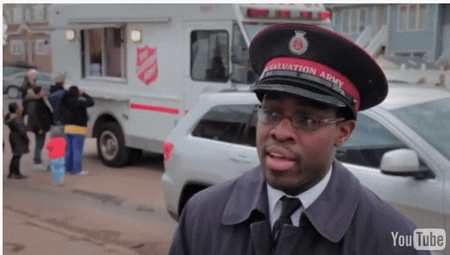By Robert Docter, Editor-In-Chief
Any challenges in your life today? Have you faced them? Do it now!
Here are some examples of people who did.
It was on July 1, 1863, that a division of Confederate General Robert E. Lee’s cavalry collided with a contingent of Union General John Buford’s cavalry near a small town in southern Pennsylvania about 10 miles above the Maryland border. The town’s name was Gettysburg.
Thus began the bloodiest, most costly battle of the American Civil War. It lasted for three days and resulted in what many termed a victory for the Union Forces under the leadership of General George Meade, given command of the Army of the Potomac a few days earlier. This massive engagement became the turning point of the American Civil War.
Motivated by his desire to end the war with a major defeat of the Union Army and hoping to discourage Northern politicians with attacks on Pennsylvania cities, Lee began his second invasion of the North in early June, buoyed by his major victory at Chancellorsville.
By dawn on the second day, 94,000 Union troops and 71,700 Confederates were assembled. The Union line stretched about a mile and a half from Cemetery Hill at the north end, overlooking a large valley almost a mile wide. The line then descended along Cemetery Ridge, the Union’s primary defensive point only about 40 feet above the valley, and made a sharp turn in the middle at what came to be known as “the angle.” A stone wall topped the ridge and continued to Little Round Top, a small hill holding the Union’s left flank. On the far right was Culp’s Hill, also in Union hands. All of these areas faced withering fire and attack during this second day of the battle.
On the third day, “after two bloody but indecisive days of fierce fighting,” the battle continued on the slopes of Culp’s Hill as Confederate troops assembled on Seminary Ridge, just across the valley from Cemetery Ridge. Lee knew that “this third day would be pivotal,” and planned accordingly. Major General George Pickett’s 4,500 Virginians had arrived late on July 2. Lee had held them out of battle for this moment as Confederate artillery continued its bombardment of the center of the Union line.
With his troops on Seminary Ridge, Lee’s most trusted General, James Longstreet, told his commander that the position could not be taken and that he thought the plan was futile. Lee simply said: “Get me Pickett,” and initiated the charge across the valley that would become among the bloodiest and most costly in human life in the annals of American military history. Lee sought to crush the Union forces and end the war.
A heavy bombardment of the Union lines by 150 cannons initiated the battle. This became “the largest battery ever assembled on the North American continent.” Unfortunately for them, they were unaware that their shelling had gone over the Union lines to land in the rear. Pickett, however, now with more than 15,000 men, began his charge across “the valley of death.” Troops from one Confederate corps breached the Union line at “the angle,” but were then driven back. This was the “high water mark” of the Confederate troops in the war.
Lee began his retreat south having sustained as many as 23,000 casualties including 4,700 killed. Union troops sustained the same number of casualties with around 3,100 killed.
“A few words”
Three months following the battle, on Nov. 19, 1863, the nation memorialized the battlefield. On the occasion, those responsible chose Edward Everett, a distinguished orator and political leader, to deliver the principal address. He spoke for two hours. I’ve never seen a copy of his speech.
Just a few days prior to the event, almost, it seems, as an afterthought, President Abraham Lincoln received an invitation to “say a few words.” He did, and almost everyone remembers many of the sentences in the two-minute, 266-word speech.
William Safire, in his book Lend Me Your Ears, described it as “the best short speech since the Sermon on the Mount.”
Four score and seven years ago our fathers brought forth on this continent, a new nation, conceived in liberty, and dedicated to the proposition that all men are created equal.
Now we are engaged in a great civil war, testing whether that nation, or any nation so conceived and dedicated, can long endure. We are met on a great battlefield of that war. We have come to dedicate a portion of that field, as a final resting place for those who here gave their lives that that nation might live. It is altogether fitting and proper that we should do this.
But in a larger sense, we cannot dedicate—we cannot consecrate—we cannot hallow this ground. The brave men, living and dead, who struggled here, have consecrated it far above our poor power to add or detract.
The world will little note, nor long remember, what we say here, but it can never forget what they did here. It is for us the living, rather, to be dedicated here to the unfinished work which they who fought here have thus far so nobly advanced. It is rather for us to be here dedicated to the great task remaining before us—that from these honored dead we take increased devotion to that cause for which they gave their last full measure of devotion—that we here highly resolve that these dead shall not have died in vain—that this nation, under God, shall have a new birth of freedom—and that government of the people, by the people, for the people shall not perish from the earth.








